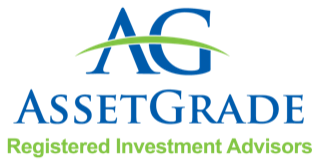BY: Pat Cote, CFA, CFP®
The fastest growing retirement plans are a type many people have not heard of, CB (cash balance) and DB (defined benefit) plans. They are the modern update to the pensions that most large companies used to offer years ago. CB-DB plans are particularly popular with small professional service firms, such as healthcare, engineering and law practices.
The big benefit of CB-DB plans is that they allow partners or business owners to put aside extra money on a tax-deferred basis beyond their 401K. The maximum that can be saved in a 401K, including both employee and employer contributions, is $58K/year ($64.5K if age 50 or older). For professionals like physicians, dentists or attorneys, they may have had large student loans while in their 30s. By the time the ir compensation increases in their late 30s or early 40s, they may not have a lot of savings in place . As a result, they would need to start saving quite a bit every year to catch up and fund their retirement. As they become more experienced, they typically have higher incomes which in turn may lead to higher taxes. This type of situation is ideal for them to put as much as possible into retirement plans to reduce taxes and to catch up on their retirement savings.
While we don’t know what future tax rates will be, for higher income households there is a real possibility that tax rates will go up at some point in the future. Higher tax rates make saving in tax-deferred retirement plans even more attractive.
For households with incomes between $400K and $700K, setting up a CB-DB plan can be particularly attractive to reduce taxable income. There are multiple benefits that phase out beyond ~$400K today, and future tax changes may create even higher taxes for incomes over $400K. For a 55 year old married couple with $600K in annual income, putting aside $64.5K in a 401K plan would not reduce income enough to avoid the tax penalties. However, they could save up to an additional $218K each year in a CB-DB plan, which would help to bring their taxable income down below the $400K threshold and create significant tax savings. This would allow them to capture some of the tax breaks that occur <$400K, such as the 20% qualified business income deduction and/or child tax credits.
Because of the way these plans are set up, cash balance and defined benefit plans are most attractive for smaller firms (e.g., <15 employees) with owners who are 10+ years older than the average age of employees. All of the contributions that go into CB-DB plans are employer contributions, not employee contributions. For businesses with younger staff at lower compensation levels, the cost of making the CB-DB contributions for employees remains relatively small, while allowing the businesses to offer a nice benefit to help recruit and retain staff.
Many businesses or professional services practices that would benefit from having CB-DB plans never find out about them because their CPA or financial advisor is not familiar with them. If you are interested in learning more about CB-DB plans, please feel free to contact us at AssetGrade to discuss whether they may be a good fit for you.


